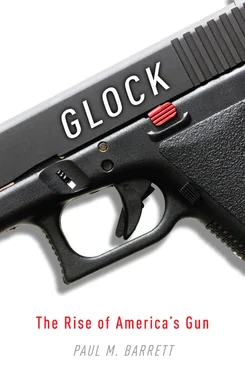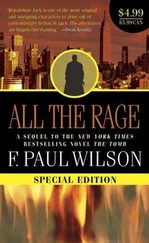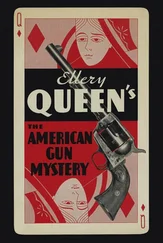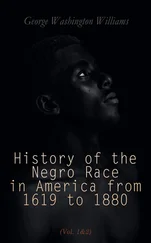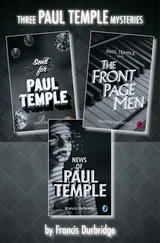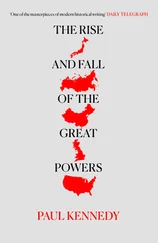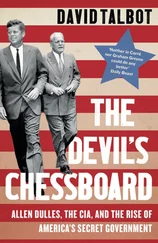The Glock, introduced in the 1980s, inherited all aspects of the American firearm heritage: It was seen as an instrument of law and security, but also menace, danger, and fear. It became the handgun of choice for cops and a favorite of some demented mass killers. Its black plastic-and-metal construction set it apart from everything else on the market, suggesting modernism and efficiency. The handgun is the weapon Americans really care about, and within a decade of arriving here, the Glock had become the ultimate American handgun.
/ / /
Hunters shoot deer with semiautomatic rifles, ducks with double-barreled shotguns. Aside from animal-rights activists, few people spend much time arguing about any of that. United States military involvement in Iraq and Afghanistan is controversial, but if American troops are going to be over there, who doesn’t want them to have powerful machine guns? The firearm that plays in our fantasies and nightmares is the handgun.
The commonsense criminal uses a handgun because it is concealable and disposable. The National Rifle Association’s main cause is not the spreading of rifles; it is making sure that more people can legally carry handguns, ostensibly to protect themselves from armed thugs. Cops carry handguns too, because they are light and maneuverable.
Of the many makes on the US market, one stands apart: the Glock. Gun-control activists have denounced the Austrian pistol and tried to have it banned—attacks that only enhanced the Glock’s glamour in the eyes of its fans. Today the Glock is on the hip of more American police officers than any other handgun. It is all over the television news and the Internet. When American soldiers hauled Saddam Hussein from his underground hideout in 2003, the deposed Iraqi ruler came to the surface with a Glock. New York Giants star wide receiver Plaxico Burress shot himself in the leg in 2009 with a Glock he had stuck in his waistband before heading to a Manhattan nightclub. Some of our most prolific psychopaths have favored the Glock, presumably because of its large ammunition capacity and lightning speed. Seung-Hui Cho, who murdered thirty-two people at Virginia Tech in 2007, used a Glock. So did Steven Kazmierczak when he shot twenty-one, killing five, at Northern Illinois University in 2008. Jared Loughner fired a Glock with a thirty-three-round magazine in his January 2011 attempt to assassinate Representative Gabrielle Giffords in Tucson, Arizona, an attack that resulted in six dead and thirteen injured, including Giffords, who survived after a nine-millimeter round passed entirely through her brain. The congresswoman herself, it turned out, owned a Glock.
Shapers of culture, low and high, have glommed on to the Austrian pistol. By the 1990s, no firearm brand turned up more often in the pugnacious lyrics and videos of hip-hop, the country’s ascendant popular music. In their 1992 hit “Bitches Ain’t Shit,” Dr. Dre and Snoop Dogg traded verses on women and romantic betrayal. “As we groove down the block / See my girl’s house, Dre, pass the Glock,” Snoop Dogg rapped. His girl turns out to be in the arms of another man, and the Glock becomes the means of Snoop’s revenge.
On the big screen, Glocks turned up as early as 1990, in the hands of villains in the Bruce Willis action thriller Die Hard 2 . Countless celluloid toughs followed suit. Think of all the snarling gangsters holding big, blunt pistols sideways, palm-down; most of those guns were Glocks, the ultimate badass weapon.
Referring to a Glock became a signal of cultural awareness. Aaron Sorkin, in his brilliant screenplay for The Social Network , the 2010 movie about the invention of Facebook, has one Harvard nerd verbally lash out at a classmate who publicly embarrassed them: “I’m gonna get a Glock 39, and I’m going to kill you.”
Not “I’m gonna get a gun , and I’m going to kill you.”
Say Glock to the mildest Quaker, and she will know you are talking about a tough handgun. Mention the brand to a firearm buff, and his eyes will light up. Glock is the Google of modern civilian handguns: the pioneer brand that defines its product category. Its boxy shape, black finish, and almost defiant lack of grace became the standard. The no-firearms symbol posted by the federal government at US airports incorporates the profile of—what else?—a Glock.
In the late-twentieth-century chapter of the long story of the gun in America, the Glock achieved the status of a literary character. Elmore Leonard, the crime novelist, gave the pistol a prominent role in Freaky Deaky (1988). Chris Mankowski, Leonard’s suspended detective hero, confronts a hoodlum named Juicy Mouth: “Chris walked around to the front of the Cadillac. He raised the Glock in one hand and stood sideways—not the way Mel Gibson did it, two handed—Juicy looking right at him now, aimed at the fat top part of the seat next to the guy and began squeezing off shots.” A few years later, in his epic satire Infinite Jest , David Foster Wallace imagined a deranged junior tennis star habitually carrying a Glock onto the court and threatening to kill himself if he loses: “Everybody watching the match agrees it is one ugly and all-business-looking piece of self-defense hardware.”
How did it happen that in the most firearm-fixated country in the world, “Glock” came to mean “gun.” How did a pistol produced by an obscure engineer in suburban Vienna, a man who spoke barely any English and had no familiarity with the American zeitgeist, become, in the space of a few years, an American icon? The answers reveal more than the history of one company or even the recent evolution of an entire industry. The progress of Herr Glock’s gun illuminates the country’s changing attitudes about law enforcement, self-sufficiency, and safety. It explains the strange, scary allure of the dull clicking sound the slide makes when a nine-millimeter communicates it is ready to fire the first round.
CHAPTER 4
“Plastic Perfection”
Karl Walter, gun-salesman-on-wheels, first learned about the Glock 17 from a report in the German weapons magazine Deutsche Waffen Journal . An Austrian transplanted to the United States, Walter had enjoyed precocious success selling specialized European firearms to American police departments and gun collectors. He closely followed industry developments back in Europe. When an unknown won a large contract to supply pistols to the Austrian Ministry of Defense, he was intrigued. How could this Gaston Glock have bested the old-line brands? Walter sniffed opportunity.
In the 1970s and early 1980s, Walter traveled the United States in a motor home customized as a rolling arsenal. He displayed his wares in locked, felt-lined showcases: Uzis, AK-47s, Steyr AUG bullpup assault rifles, you name it. Walter didn’t sell ordinary firearms. He sold the heavy stuff—to police departments and retailers with special licenses allowing them to trade in fully automatic weapons. He drove a circuit from New England to the Middle Atlantic States, down to Miami, across to Dallas. For a certain breed of gun buyer, “it was a candy store,” he recalled.
Undercover agents with the US Bureau of Alcohol, Tobacco and Firearms kept a wary eye on Walter. Occasionally, they tested him—would he sell a select-fire Uzi to a buyer who lacked the proper federal permit?
He refused the bait. But that did not save him from getting arrested once, in 1972, by the local police in Troy, New York. The Troy authorities accused the young man with the thick Austrian-German accent of illegally transporting weapons. Walter explained that he was a legitimate salesman just earning a living. The gun-trafficking charges were dropped—Walter, as usual, had all the necessary paperwork—but the police in Troy suggested that he make his way to the state border as swiftly as the speed limit permitted.
Читать дальше
